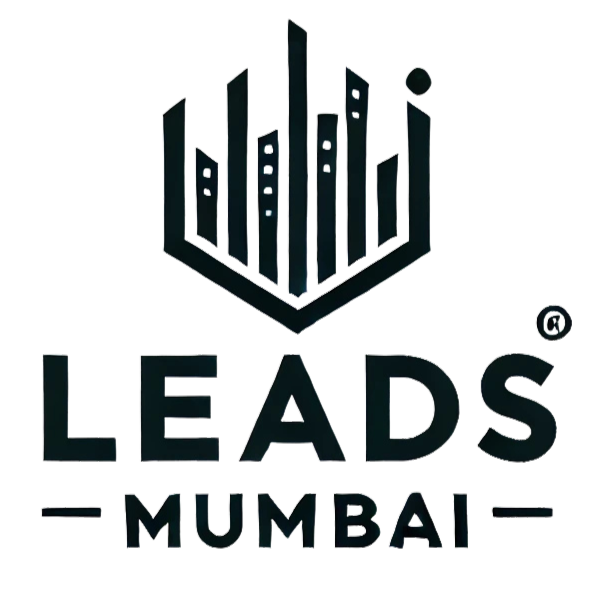Writing compelling ad copy for Facebook is a key component of any successful digital marketing strategy. With millions of users scrolling through their feeds every day, it’s crucial to create ads that stand out, grab attention, and drive engagement. The challenge lies not only in reaching the right audience but also in crafting messages that resonate with them on a deeper level. This article will explore three critical elements of effective Facebook ad copy: understanding your audience, crafting attention-grabbing headlines and CTAs, and using emotional appeal and storytelling to build stronger connections with your customers. By mastering these elements, you can improve your ad performance and drive meaningful results.
Understanding Your Audience: Tailoring Ad Copy to Specific Segments

One of the most crucial elements of creating effective Facebook ads is understanding your target audience. The ability to craft ad copy that resonates with different audience segments can significantly increase engagement, click-through rates, and conversions. Facebook offers powerful tools to help businesses reach specific demographics, and by tailoring your ad copy to these segments, you can make your ads much more compelling and relevant.
The Importance of Identifying Your Target Audience on Facebook
The first step in Writing Compelling Ad Copy for Facebook is knowing who you’re talking to. Facebook has billions of active users, and each user has different interests, behaviors, and needs. Identifying the right audience for your product or service ensures that your ad copy reaches the people who are most likely to be interested in what you’re offering. By targeting the right audience, you maximize your chances of generating clicks and conversions, making every marketing dollar more effective.
Understanding your audience’s preferences, age group, gender, location, and other factors allows you to tailor your ad copy specifically to their interests. For example, a fitness brand targeting young professionals in Mumbai may highlight the benefits of their product in a way that appeals to their lifestyle—such as emphasizing convenience and time-saving—while a wellness brand targeting seniors may focus on health benefits and long-term vitality. This is where Writing Compelling Ad Copy for Facebook becomes essential, as it bridges the gap between your message and the audience’s unique needs.
Crafting Ad Copy That Speaks to Audience Needs, Interests, and Pain Points
Once you have a clear idea of who your target audience is, it’s time to focus on Writing Compelling Ad Copy for Facebook that speaks directly to them. The key is to address the specific needs, interests, and pain points of each audience segment. For example, if you’re targeting young mothers, you might highlight how your product saves time and simplifies their busy lives. On the other hand, for a tech-savvy audience, focusing on product innovation and cutting-edge features will resonate more.
Effective ad copy focuses on the benefits, not just the features. People want to know how your product or service will improve their lives or solve a problem they’re facing. By aligning your message with their concerns or desires, you increase the likelihood of your ad being noticed and clicked. Mastering Writing Compelling Ad Copy for Facebook ensures that your message not only stands out but also drives engagement.
In conclusion, the art of Writing Compelling Ad Copy for Facebook lies in understanding your audience deeply and crafting messages that resonate with their needs and aspirations. When done right, Writing Compelling Ad Copy for Facebook becomes a powerful tool to connect, convert, and grow your brand effectively
Using Facebook’s Audience Targeting Options
Facebook’s robust audience targeting options allow you to refine your message even further. With features like demographic targeting, interest-based targeting, and behavior-based targeting, you can segment your audience and tailor your ad copy to each group. For example, if you’re running an ad for a new restaurant in Bandra, you can target people who are interested in dining out, food delivery, or local Mumbai restaurants. You can also narrow down your audience by behavior, such as people who frequently shop online or engage with similar brands.
These targeting tools allow you to deliver highly personalized ad content, ensuring your message resonates with each specific group. The more precise your targeting, the more relevant your ad copy becomes, driving higher engagement and conversion rates.
By fully utilizing Facebook’s audience targeting features and crafting ad copy tailored to the needs and behaviors of specific segments, you can create ads that feel personal, relevant, and compelling, leading to better results.
Crafting Attention-Grabbing Headlines and Engaging CTAs

The success of your Facebook ad largely depends on two crucial elements: the headline and the call-to-action (CTA). These components play a significant role in attracting attention and encouraging users to take the next step, whether that’s clicking on the ad, visiting your website, or making a purchase. Here’s how to craft effective headlines and CTAs that drive results.
Tips for Writing Attention-Grabbing Headlines
Your headline is the first thing people see when they scroll through Facebook, so it needs to grab attention immediately. A great headline should spark curiosity or address a pain point that resonates with your audience.
- Address a Pain Point or Need: Start by identifying a problem your target audience is facing and offer a solution in the headline. For example, “Tired of Low Energy? Boost Your Day with Our Natural Supplements” immediately speaks to a common issue—fatigue—and offers a solution, which will attract those seeking relief. This approach is key when writing compelling ad copy for Facebook, as it ensures the headline speaks directly to user needs.
- Create Curiosity: If your ad is about a new product or service, tease the benefits without giving everything away. For example, “The Secret to Flawless Skin Revealed!” piques curiosity, leading users to click to learn more. Crafting such intrigue is vital when writing compelling ad copy for Facebook to drive engagement.
- Keep it Short and Direct: In the fast-paced environment of Facebook, you have a few seconds to capture attention. Short, concise headlines tend to be more effective. Phrases like “Shop Now” or “Limited Time Offer” communicate urgency while keeping the focus clear and simple. This clarity can greatly enhance your success in writing compelling ad copy for Facebook.
- Use Numbers or Statistics: Headlines with numbers tend to perform well as they convey specifics. For example, “5 Easy Steps to Improve Your Fitness” gives readers a tangible promise they can’t ignore. This approach can elevate your strategy when writing compelling ad copy for Facebook, as it adds a sense of reliability.
The Role of a Clear, Actionable Call-to-Action (CTA)
A clear CTA is essential for converting interest into action. It directs the user on what to do next, making it a key factor in driving conversions. The CTA should be direct, simple, and aligned with the objective of the ad.
- Be Specific: Instead of generic phrases like “Click Here,” use action-oriented language that directly tells users what they will gain. For instance, “Shop Now for 20% Off” clearly tells users what the next step will be and what they can expect. This level of specificity aligns perfectly with the principles of writing compelling ad copy for Facebook.
- Keep It Simple: Your CTA should be straightforward and easy to understand. Phrases like “Sign Up Today” or “Learn More” guide the user without confusion. Simplicity is a core element when writing compelling ad copy for Facebook, ensuring no friction in user experience.
- Create a Sense of Urgency: Encouraging users to act quickly can drive immediate clicks. Phrases like “Limited Time Offer” or “Hurry, Ends Soon!” make the user feel they might miss out if they don’t act fast. Urgency amplifies the effectiveness of writing compelling ad copy for Facebook, making your ads more action-driven.
Examples of Effective CTAs and Using Urgency or Exclusivity
Effective CTAs often include urgency or exclusivity to compel users to take action. For instance:
- Urgency: “Act Fast – Only 5 Spots Left!” creates a fear of missing out, motivating users to click quickly.
- Exclusivity: “Join Our VIP Club for Exclusive Deals” offers something special, which can drive clicks from users eager for exclusive access.
By crafting headlines that grab attention and CTAs that push for action, you can enhance your ad’s performance, increase engagement, and ultimately drive more conversions.
The Power of Emotional Appeal and Storytelling in Ad Copy

When it comes to creating compelling Facebook ads, one of the most effective strategies is to tap into the power of emotional appeal and storytelling. People are driven by emotions, and ads that evoke feelings tend to perform better than those that solely rely on facts or features. By connecting emotionally with your audience and weaving a narrative that speaks to their needs and desires, you can create ads that stand out and leave a lasting impression.
Why Emotional Connection Is Crucial in Facebook Ad Copy
Humans are naturally emotional beings, and we make decisions based on how something makes us feel. This is why emotional appeal in ad copy is so crucial. Ads that evoke emotions like happiness, excitement, fear, or nostalgia can compel people to take action. For example, an ad that highlights how your product can improve someone’s life or solve a pressing issue will likely trigger a positive emotional response, making them more likely to engage.
Moreover, emotional connections build trust and loyalty, which are vital for long-term customer relationships. A compelling emotional hook helps your brand feel more personal, relatable, and human, rather than just another business trying to sell something. By making your audience feel something, you’re more likely to spark interest and motivate them to follow through with a click or purchase.
How to Incorporate Storytelling to Make Your Ad More Relatable and Memorable
Storytelling is a powerful tool in Writing Compelling Ad Copy for Facebook because it humanizes your brand and makes your message more relatable. People connect with stories, and when you tell a story that resonates with your audience, you create a deeper connection. To incorporate storytelling into your Facebook ad copy, follow these steps:
- Focus on a Problem-Solution Narrative: Highlight a problem that your target audience faces and show how your product or service provides the perfect solution. For instance, an ad for a fitness program could tell a story of someone struggling with weight loss and how your program helped them overcome that challenge. This approach is essential for Writing Compelling Ad Copy for Facebook that converts.
- Use Real-Life Testimonials: Sharing customer stories or experiences is a great way to make your ad more relatable. Real testimonials can help build trust and credibility, making your audience more likely to believe that your product can solve their problems. This is a proven strategy in Writing Compelling Ad Copy for Facebook that resonates with potential customers.
- Introduce Characters and Emotions: Develop characters in your stories, such as customers or brand ambassadors, who undergo a transformation thanks to your product. This could be a mother finding more time for herself or a young professional getting their dream job because of the skills they learned from your course. Storytelling like this enhances Writing Compelling Ad Copy for Facebook by adding a personal touch.
Using Visuals and Copy Together to Create a Compelling Narrative
Visuals play a critical role in storytelling, as they reinforce the emotional message you’re trying to convey in the ad copy. Combining captivating images or videos with well-crafted copy creates a compelling narrative that resonates with your audience.
- Show, Don’t Just Tell: Use visuals to illustrate the transformation or journey that you describe in the copy. For example, before-and-after images in a weight loss ad or video footage of a customer using your product can enhance the emotional impact of the story. This visual pairing is a hallmark of Writing Compelling Ad Copy for Facebook that engages effectively.
- Align Your Visuals with Emotions: Choose visuals that complement the emotions you’re trying to evoke. A joyful image of a family enjoying a meal together can be used for an ad promoting a kitchen appliance, while a heartwarming video of a pet being rescued might work for an animal charity ad. Visual alignment is critical when Writing Compelling Ad Copy for Facebook to ensure the message is cohesive.
By combining emotional appeal, storytelling, and visuals, Writing Compelling Ad Copy for Facebook becomes more than just a sales pitch—it becomes an engaging, memorable experience for your audience. These elements help create a strong emotional connection with your audience, making them more likely to engage with your brand and take the desired action.
Conclusion
Incorporating these strategies into your Facebook ad copy can elevate your advertising efforts and set your business apart in a competitive digital landscape. By focusing on Writing Compelling Ad Copy for Facebook, understanding your audience, and tailoring your message to their needs, you can create ads that resonate. Crafting compelling headlines with clear CTAs and leveraging emotional appeal and storytelling are integral to Writing Compelling Ad Copy for Facebook that attracts attention and inspires action. Whether you’re looking to increase clicks, generate leads, or build brand loyalty, mastering Writing Compelling Ad Copy for Facebook is key to maximizing the effectiveness of your ads and achieving your marketing goals.

